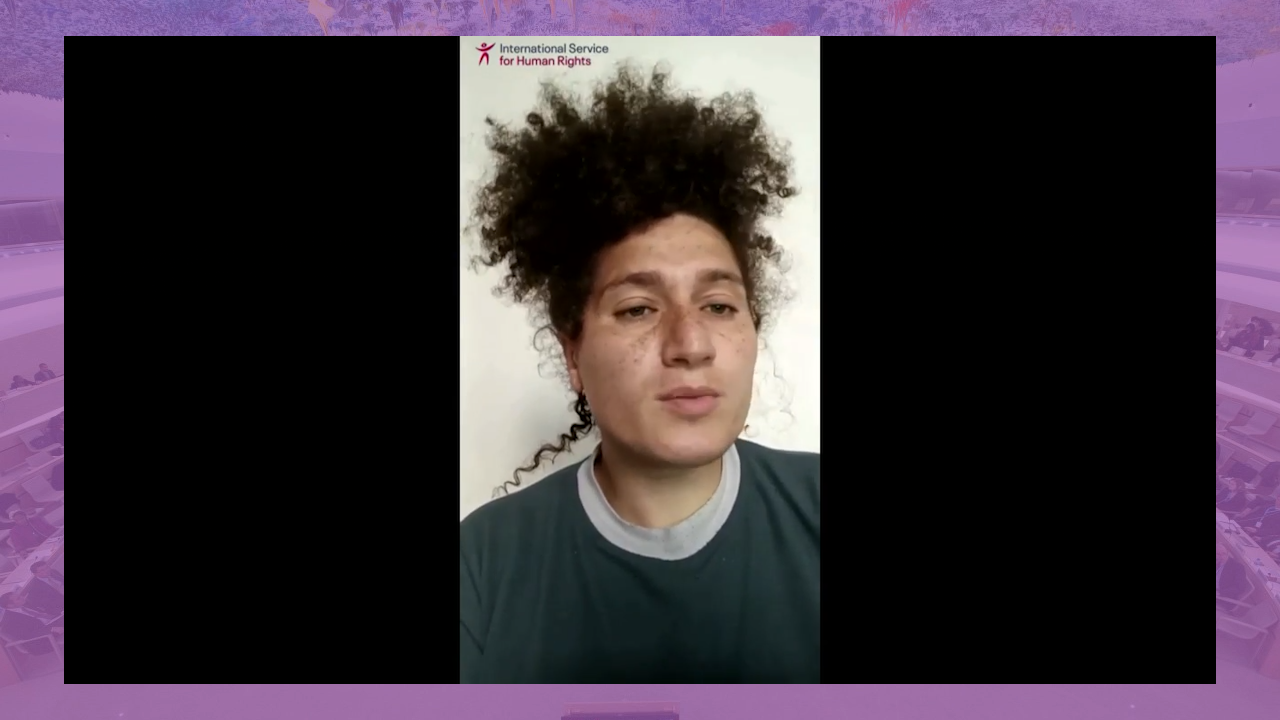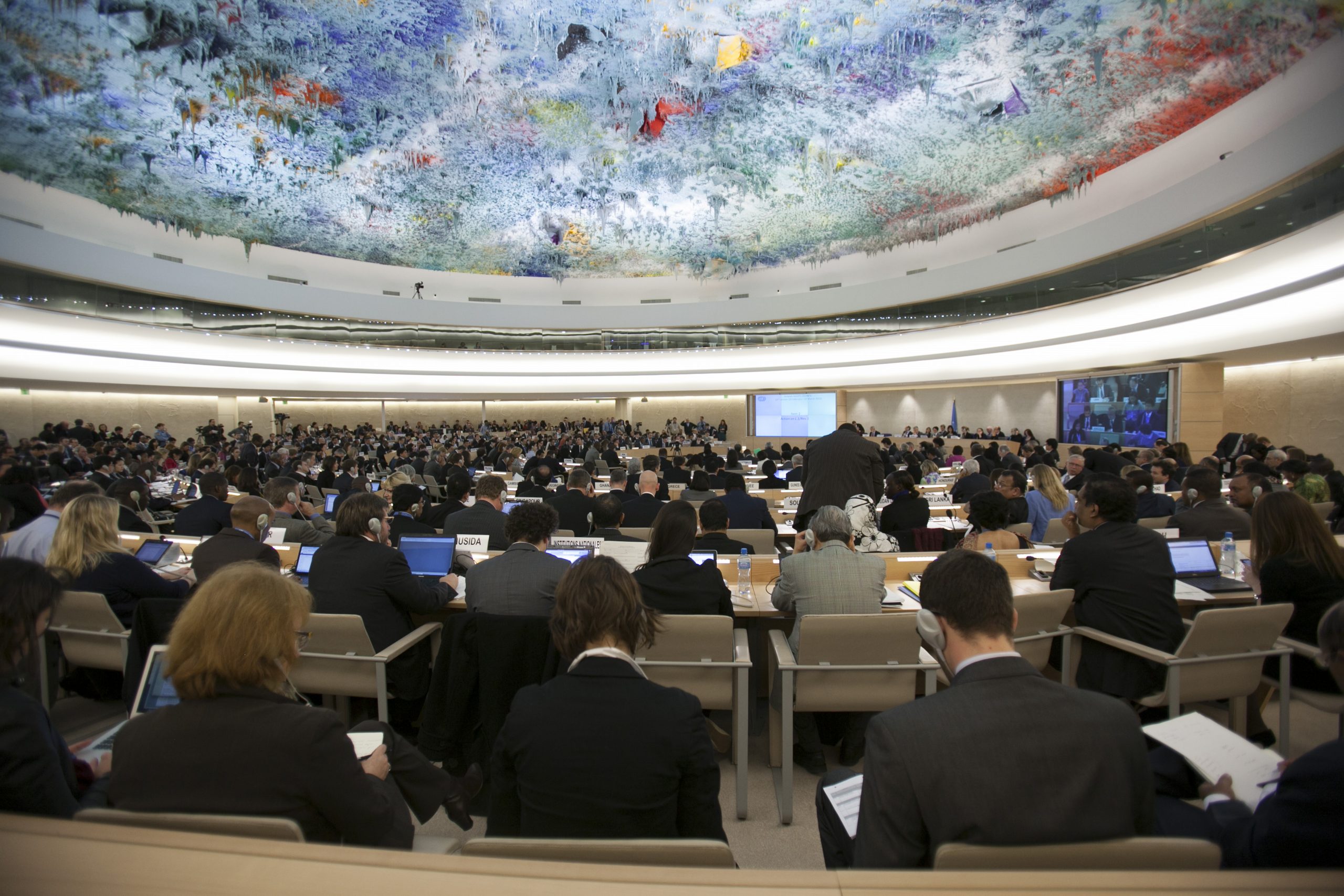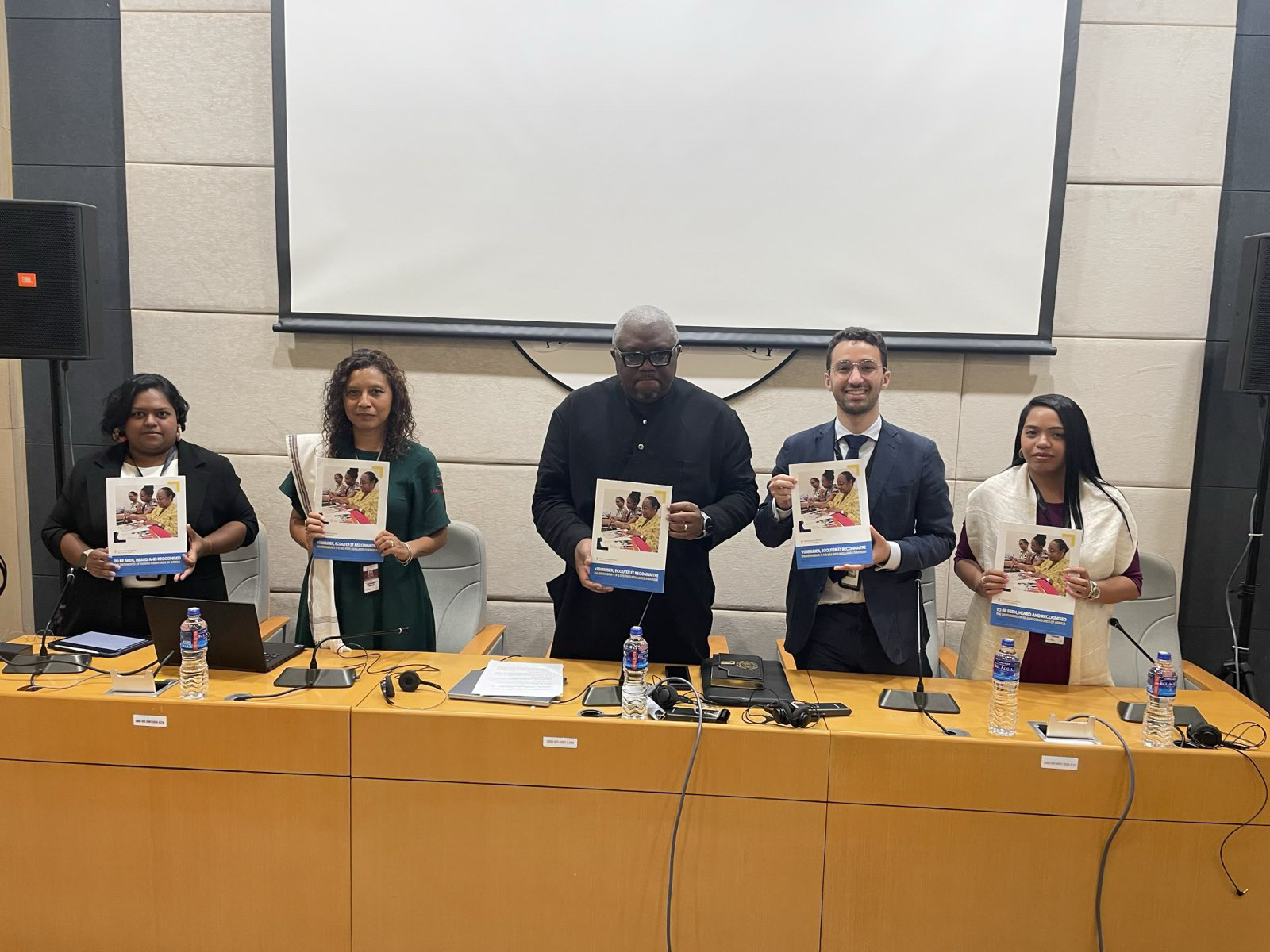
Egypt: Reform unjust vice laws, guarantee open civic space
During Egypt's UPR adoption at HRC59, Nora Noralla delivered a joint statement on behalf of ISHR, Cairo 52 and Middle East Democracy Center. Watch and read the full statement below.
Photo: Flickr Eric Bridiers

The much-anticipated sequel to the infamous ‘Protection of the Family’ initiative at the Human Rights Council has finally arrived. Introduced at this June session, amidst rich debate and discussion on women’s rights, gender equality, challenging entrenched stereotypes and norms, one wonders how far detached from reality the sponsors of this initiative are.
The much-anticipated sequel to the infamous ‘Protection of the Family’ initiative at the Human Rights Council has finally arrived. Introduced at this June session, amidst rich debate and discussion on women’s rights, gender equality, challenging entrenched stereotypes and norms, one wonders how far detached from reality the sponsors of this initiative are.
The report of the UN Working Group on discrimination against women in law and practice focused their report to this session of the Council on issues of discrimination against women in family and cultural life. ‘The cultural construction of gender makes women’s subjection to gender-based discrimination and violence appear to be inherent and immutable. The patriarchal family is the product of this construction and the most important social mechanism for its perpetuation. Women and girls’ human potential is restricted in families’ they concluded. They added that ‘the need for a paradigm shift has been clearly set out in international human rights law, which, since 1948, has established women’s right to equality in all spheres of life, in culture and in the family’.
Similarly, the annual Violence against Women resolution will focus on domestic violence, highlighting the measures States should take to prevent and respond to domestic violence and to protect victims, including from reprisals. The draft resolution recalls relevant texts that highlight domestic violence against women and girls as ‘a pervasive interference with the enjoyment of human rights, inter alia, a societal problem and a manifestation of unequal power relations, and is intrinsically linked with gender stereotypes that underlie and perpetuate such violence’.
In September 2014, the Council held a panel discussion on the topic. Panelists identified that families can be sites for the transmission of both positive and negative values. Families may nurture and promote values consistent with human rights and gender equality. On the other hand, they may put forward values that are inconsistent with human rights, such as stereotyping or prejudice towards those of a different race, religion, caste or class, and be the site for physical and psychological abuse.
The draft resolution to be considered at this session focuses disproportionately on families as institutions to be protected, as it affirms the family as crucial for the preservation of ‘morals’ and ‘traditions’, with no consideration of whether such morals or traditions are consistent with international human rights standards. Rather than welcoming the report of the Panel discussion, which reflected the broader range of perspectives, it merely ‘takes note of’ its presentation by the Office.
The text invites the High Commissioner, Treaty Bodies, Special Procedures and others to ‘pay due attention in their work to States’ obligations to provide protection and support to the family,’ but is silent on encouraging these same bodies and mechanisms to also give due consideration to States’ obligations to address abuses against individuals within the family – marital rape, domestic violence, child abuse, etc – or to address gender inequality or other systemic factors that can perpetuate such abuses.
In this way, the resolution elevates ‘the family’ as an institution in need of protection without critical assessment of the needs of individual rights-holders within the family. The Egyptian Ambassador himself noted during the panel discussion that the ‘family unit, in itself, is not a rights-holder’. Individuals are rights-holders, and may face or commit serious abuses within the family which the State has a responsibility to address. A number of Special Procedures mandate holders, including the Special Rapporteur on violence against women, have identified in their work that some States have laws or policies immunising perpetrators of marital rape from prosecution in the name of ‘protecting the family’. In addition, many States maintain laws institutionalising gender inequality in family contexts, e.g. in relation to inheritance or property rights. None of these concerns voiced by UN experts have been reflected in the draft resolution.
Most contentious is the question of explicitly recognising that various forms of the family exist. In June 2014, the lead sponsors refused to include this language in last year’s resolution, and employed a no-action motion to prevent such language even being considered by the Council. This deliberate manoeuvre suggests a narrow agenda to restrict recognition of the social reality that various forms of family exist in different cultural, political and social systems. Indeed, though the core group has argued that this year’s resolution does not intend to discuss definitions of the family, the underlying assumption of a single (heterosexual) family structure is clear.
Recognition of the diversity of families is important to help design targeted and tailored policies and measures that address the needs of all families. The UN already has agreed language from General Assembly resolution 59/147 on ‘Celebration of the 10th anniversary of the International ear of the Family and beyond’ (25 January 2005) which states ‘Recalling also that relevant UN instruments on human rights as well as relevant global plans and programmes of action call for the widest possible protection and assistance to be accorded to the family, bearing in mind that in different cultural, political and social systems various forms of the family exist’. This language is reiterated in a number of other General Assembly resolutions.
While it is the prerogative of States to design their own strategies for negotiations, it remains in bad faith that this initiative was not announced in advance at the Organisational Meeting as per the general practice. That consultation for inputs into the zero-draft text was closed is further regrettable.
Finally, a number of issues limited the ability of States to have a robust and substantive discussion of the text. The 7-page long draft resolution was circulated on the afternoon of 17 June, with the first informal on 18 June, preempting anything more than preliminary guidance from capitals. The lengthy text unfortunately contains no citations or references indicating the source of any of the language. Some references (e.g. to “unhealthy lifestyles”) appear to be subjective assertions rather than UN language. Without references, it is impossible for States or other interested parties to ascertain whether the many assertions of law and fact represent agreed or negotiated text, whether they are taken out of context from existing documents, or whether they represent merely the unsubstantiated views of the lead sponsors of the resolution. Under these circumstances, the civil society community had only a limited window within which to reach out to States that are allies and advocate for strong rebuttals of problematic language.
States must reject this draft resolution as one that is unhelpful in furthering the human rights discourse in any meaningful way and serves only to undermine hard gained advances. Worse, the combative stance taken by the core group could threaten to undermine hard-won language – both agreed upon in past texts, and reflective of new dynamics and trends – in critical and longstanding resolutions on violence and discrimination against women.
As the Working Group on discrimination against women stated in their report, ‘the State must act as an agent of change’ as regards to the place of women and all marginalised and vulnerable groups in cultural and family life. This includes reviewing discriminatory laws and practices, ensuring effective protection measures for victims to face abuse in family and cultural life and providing adequate services.

During Egypt's UPR adoption at HRC59, Nora Noralla delivered a joint statement on behalf of ISHR, Cairo 52 and Middle East Democracy Center. Watch and read the full statement below.

The 59th session of the UN Human Rights Council (16 June to 9 July 2025) will consider issues including civil society space, climate change, sexual orientation and gender identity, violence and discrimination against women and girls, poverty, peaceful assembly and association, and freedom of expression, among others. It will also present an opportunity to address grave human rights situations including in Afghanistan, Belarus, China, Eritrea, Israel and oPt, Sudan, Syria and Venezuela, among many others. Here’s an overview of some of the key issues on the agenda.

On 4 May 2025, on the sidelines of the 83rd Ordinary Session of the African Commission on Human and Peoples’ Rights (ACHPR) in Banjul, ISHR officially launched its new report on the situation of human rights defenders in the African island states: Cape Verde, Comoros, Madagascar, Mauritius, São Tomé and Príncipe, and Seychelles.